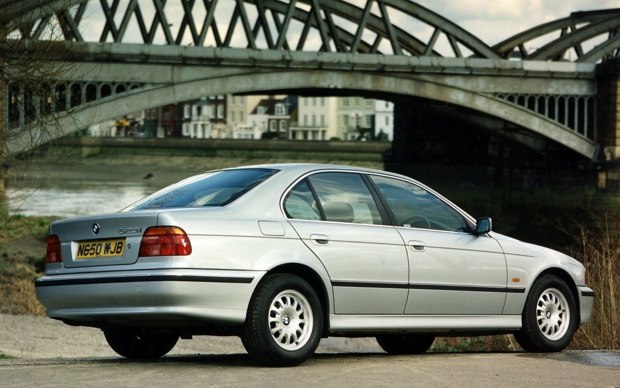Future Classic Friday: BMW 5 Series

There are certain cars that come along that are instantly brilliant and go straight to the top of their class.
BMW's E39 5 Series is one such car - from the minute it made its debut at the 1995 Frankfurt Motor Show, replacing the much-loved BMW E34 5 Series, the executive saloon was touted as one of the best cars the German company had ever made.
By the time it hit showrooms in 1996, the BMW E39 5 Series had stoked up even more enthusiasm. The media were in raptures over the car's impeccable driving dynamics, while the build quality, performance and comfort were also first rate.
The BMW E39 5 Series was also an impressive piece of engineering, using more lightweight materials than any previous BMW, including a new aluminium subframe and - for the first time in a BMW 5 Series - rack-and-pinion steering.
The new set-up gave fine handling balance and a level of agility that made the E39 feel like a much smaller car from behind the wheel.
All variants were punchy - even the entry level BMW 520i had 150bhp from its 2.0-litre straight six, while the BMW 523i and BMW 525i models were pleasingly rapid. If you wanted proper poke, though, the real stars of the range were the new V8s - the BMW 535i and BMW 540i.
Refined, powerful and with a wonderful exhaust note, they were also surprisingly economical, especially on the motorway. It's no wonder, then, that the BMW E39 5 Series was widely regarded as the best executive car on the market by all of the contemporary car magazines.

The BMW E39 5 Series armoury was strengthened even further in late 1996, with the addition of the 5 Series Touring estate model, which featured a pop up rear screen and an extremely capacious load bay.
If anything, the 5 series Touring was even more handsome than the well-proportioned saloon and again went instantly to the top of its class.
Indeed, the only weak link in the range was the diesel engine. The BMW 525 TDS used the old 141bhp six-pot turbodiesel from the BMW E34 (also found in the Vauxhall Omega) and while it was a tough unit, refinement and performance weren't its strong points.
BMW's answer was, in 1998, to yet again create a class leader. The new BMW 530d used a three-litre six-cylinder engine newly developed for the model, with incredible performance and torque. It was, in the eyes of many, the best diesel car in the world.
It was followed up in 2000 with a 2.0-litre four-cylinder turbodiesel in the fleet friendly BMW 520d to coincide with a mild facelift - a car that might not sound that exciting, but was more than capable of delivering a satisfying drive.
The BMW E39, then, was a true great. One of the best cars of its era, if not the best in terms of its context. Its status as a future classic is guaranteed, but don't buy one with your eyes closed.
Early BMW 530ds aren't renowned for their reliability and there are several ropey high mile E39s out there, some with questionable modifications.
Don't buy one of those. Instead, seek out a well maintained and totally standard example. A good maintenance record is far more important than mileage and be wary of rust, especially around the rear arches, trailing edge of the sills and on Touring tailgates.
BMW E39s are tough cars, but they're not immune to rot, especially with the oldest examples now approaching 30 years old. They don't look it, though, do they? A truly handsome and brilliant car. Find a classic BMW for sale.

